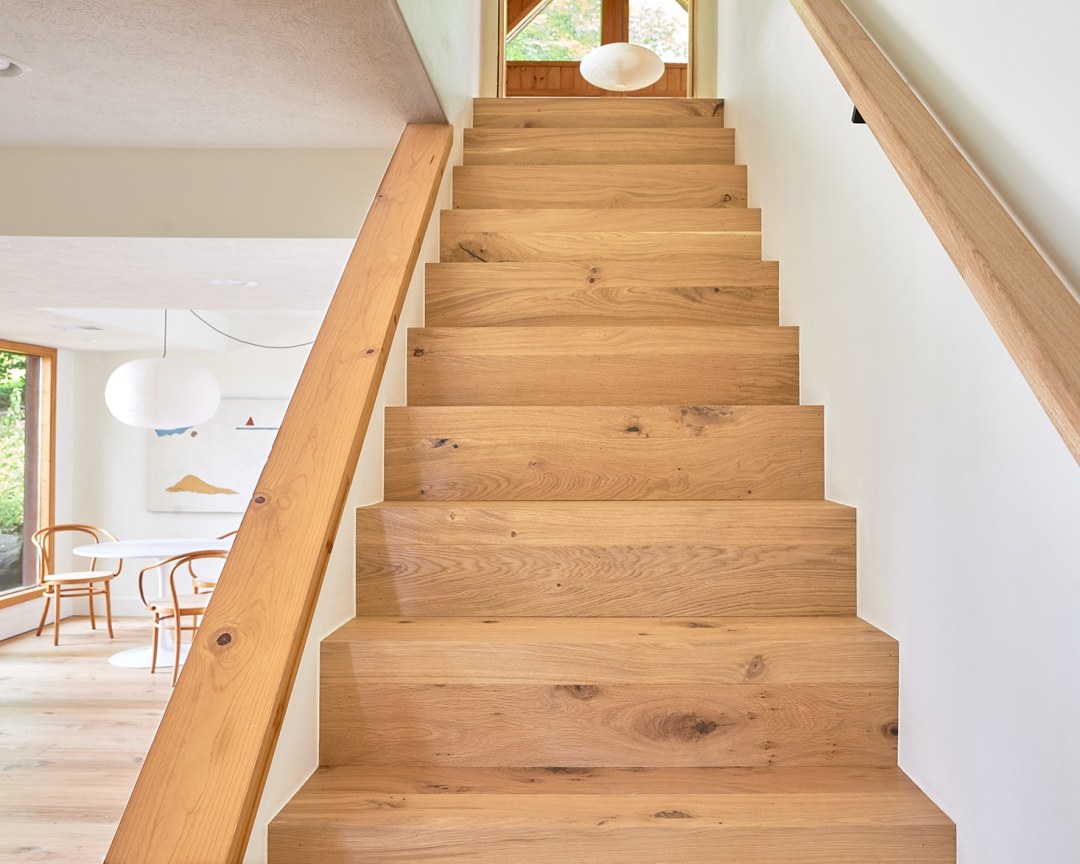
This post is in partnership with Stuga. I received a discount on flooring and stair solutions in exchange for sharing my installation experience.
When we bought the cabin, the interior was finished with builder-friendly, dated materials. During our slow renovation, we’ve focused our attention on replacing nearly every inch of synthetic flooring (think carpeting and vinyl flooring of all kinds) with natural materials wherever possible. The design direction for the cabin is all about borrowing inspiration from the Pennsylvania trees, mountains, and water around it. These elements come through in shades of green, terra-cotta, and warm whites accented by honey-toned pine and oak.
The largest improvement we’ve made to our cabin is installing Stuga floors in the color Shell throughout. And to take things up an extra notch, we partnered with Stuga to add matching Flush Stair Nosings. We took dated, carpeted steps and turned them into modern, clean, beautiful Swedish oak steps. This post is all about how to measure for, order, and install the engineered hardwood nosings. It’s a DIY-possible project if you’ve got the right tools and skills to match the complexity of your steps.
Before and After – The Steps to the Lower Level
We transformed two staircases in the cabin: the steps to the loft and the steps to the lower level. In this post, we’ll focus on the steps to the lower level. Let’s start with those good ol’ before-and-afters because a little inspiration never hurt anyone. You’ll notice that in addition to the new stair nosings, we also painted the walls BM Simply White and replaced the handrail, trim, receptacles, and light switches.
Before
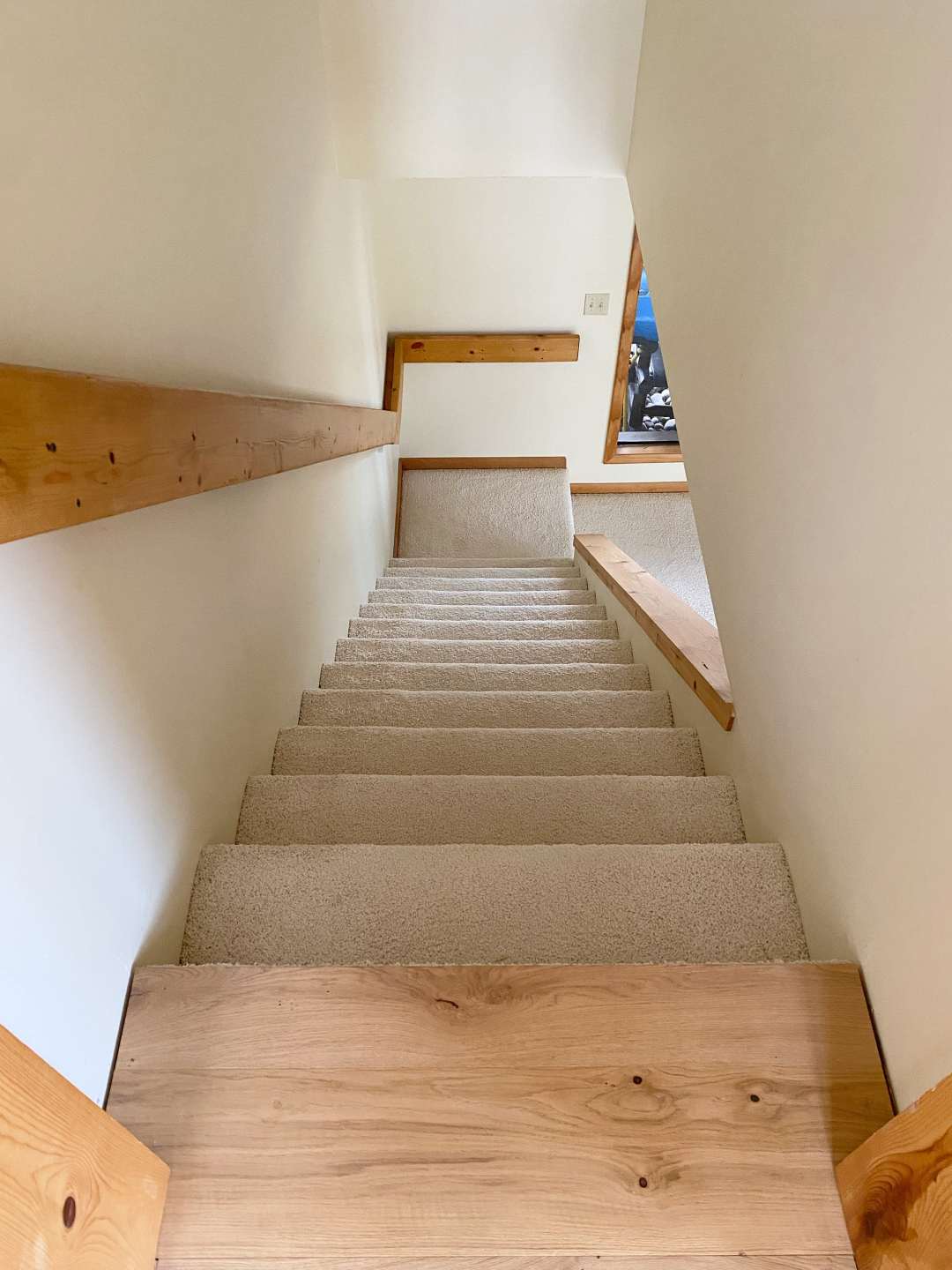
After
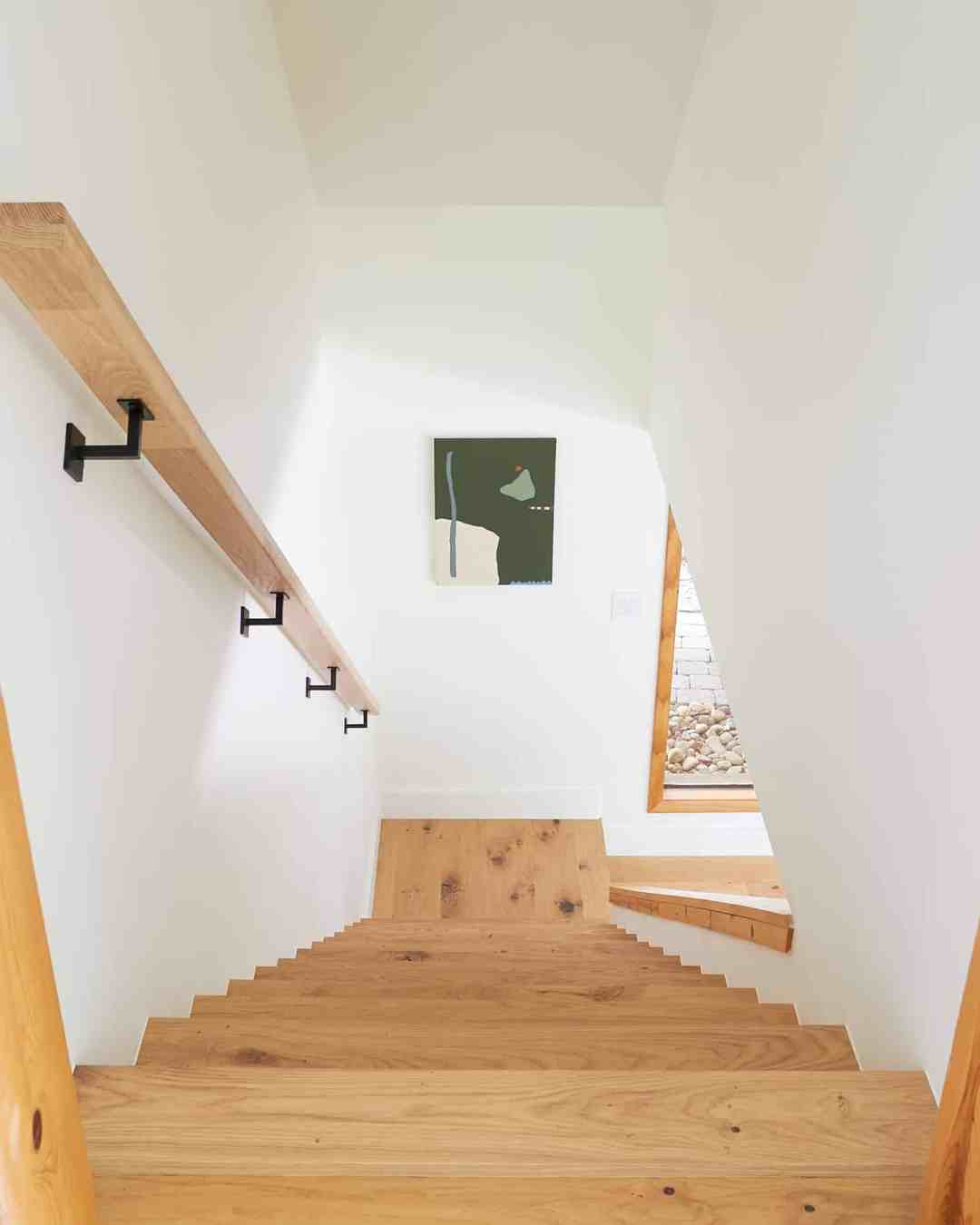
Before
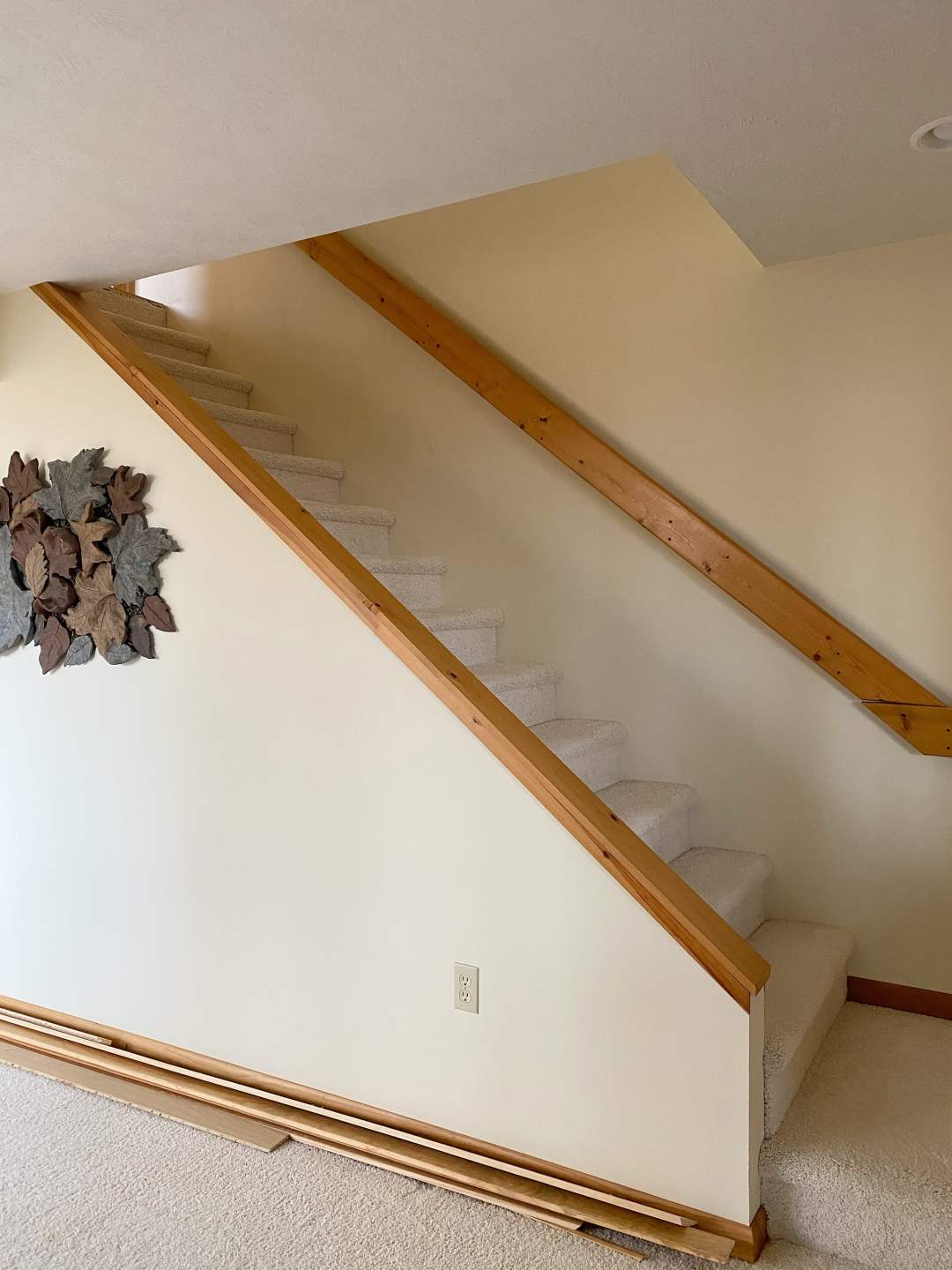
After
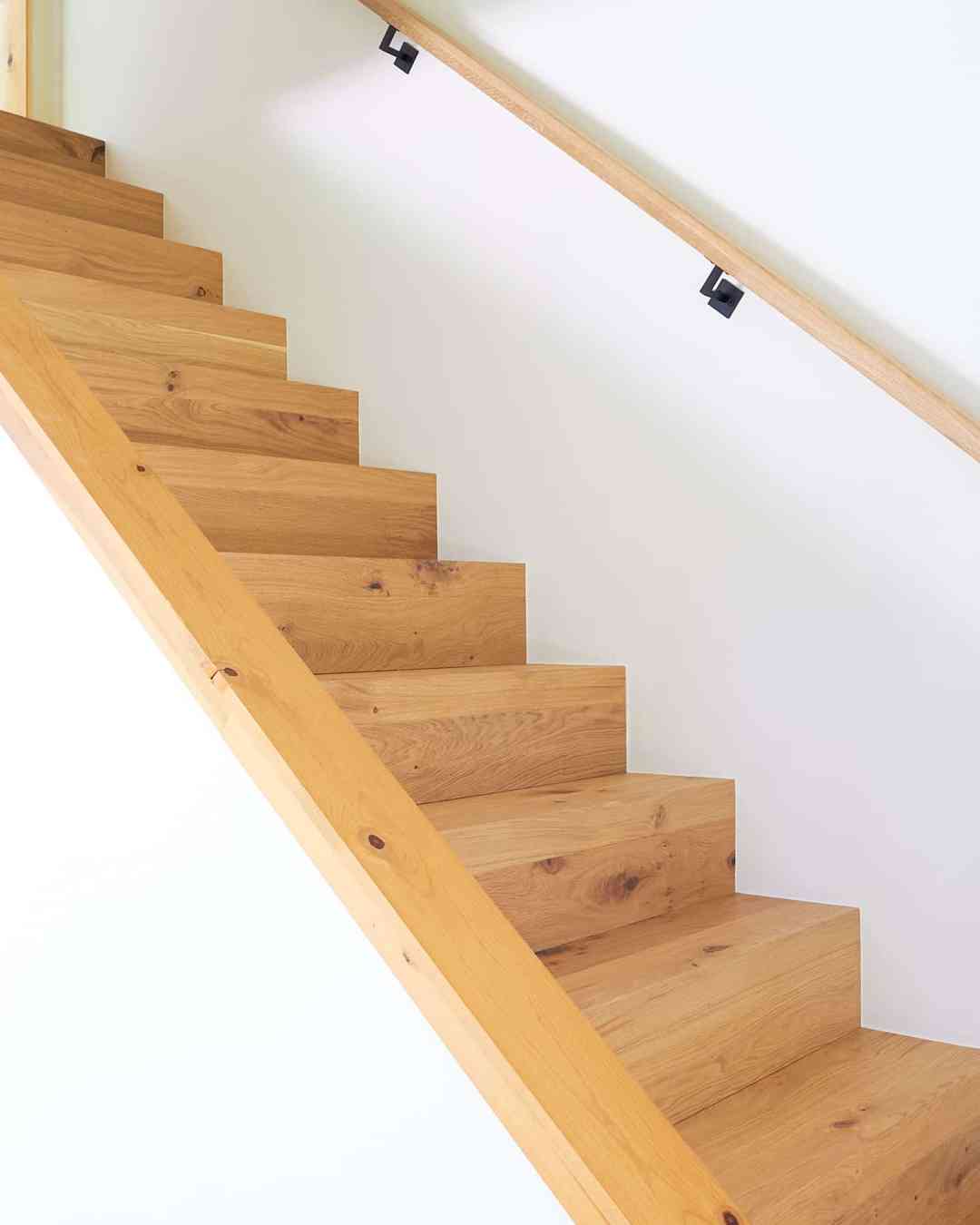
What are Stuga Stair Nosings?
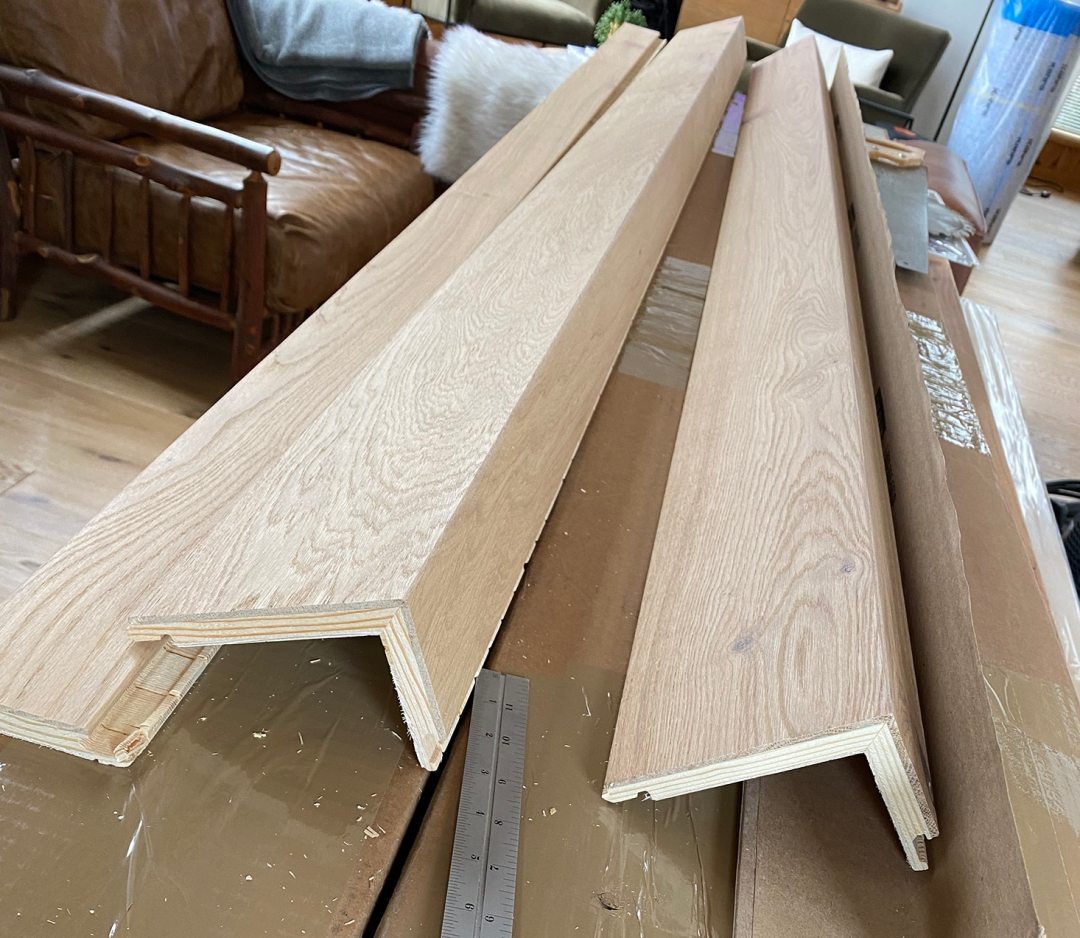
Stuga stair nosings are made by the folks at Stuga using their engineered hardwood flooring product. The same features that make Stuga flooring unique carry over to the nosings: a super strong locking system and all-wood construction (pine and spruce core with real oak on top). The flush stair nosings are created by Stuga to form a perfect mitered and glued right angle for the square profile and ship in long lengths like you see above.
The nosings have the same special wooden lip and groove system that the standard Stuga floorboards have, allowing you to lock the nosings with the floor boards to form the treads and risers.
Measuring and Ordering
Stuga currently offers 2 different styles of stair parts to match their flooring: flush stair nosings and square stair nosings. In this post, we’ll be talking about installing flush stair nosings on existing steps (not new construction) that were originally built to be carpeted. There’s going to be math and there’s going to be measuring.
After removing any carpeting, padding, tack strips, and nails from your stairs measure the width of each of your stair treads. Use the dropdown on the Stuga page to find the flooring type you’ll be purchasing and the length that the pre-made nosing will come in. Figure out how many steps you’ll get out of the nosing piece and then calculate how many pieces you’ll need to buy. It is not a bad idea to purchase at least 1-2 extra pieces to cover any shipping damage or mistakes you might make when cutting or installing.
For Example
The staircase to the lower lelve is made up of 14 steps, each measuring around 36″ inches wide. Shell flush stair nosings come in 84” lengths. With the help of math, I determined that we’d cover 2 stairs per 84″ length, meaning we’d need to order a minimum of 7 nosings for this set of stairs.
You’ll also need regular flooring pieces to go with your stair nosing install as you’ll be adding regular flooring pieces on your tread and your riser, so include that in your order if you don’t already have extra on hand.
Installation Tools and Equipment
- Table Saw
- Mitre Saw
- Nail Gun
- Square
- Tape Measure
- Stuga Nosings
- Stuga Flooring
- Scrap wood or 2×4 for spacers
- Painters Caulk
- Painters Tape
- Trim or wall paint
Making and Installing Spacers
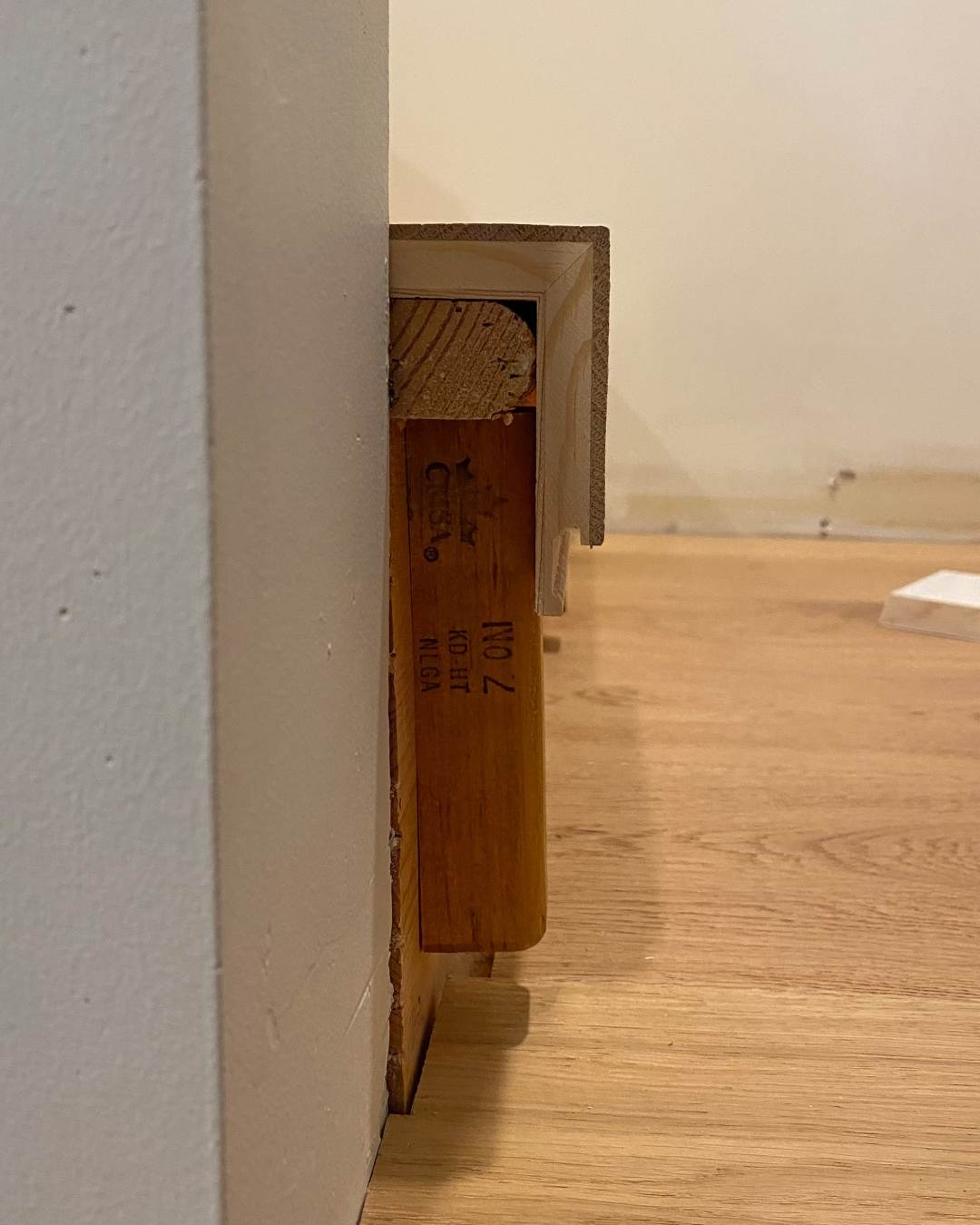
Because we are adding flush square nosings to steps that were built with a protruding tread nosing, we need to bring the riser depth out to match the nose on the tread above it. To do this we added wood blocks as spacers to ensure there’s something secure to nail the new Stuga square nosings into. To save on materials, we cut 3 spacers for each riser, but if you’re rich with wood, you could use one solid piece across.
If you are installing square nosings in a new build, you’d start with a squared off stair skeleton (absolutely not what it’s called) instead of retrofitting with spacers.
Measuring for Spacers
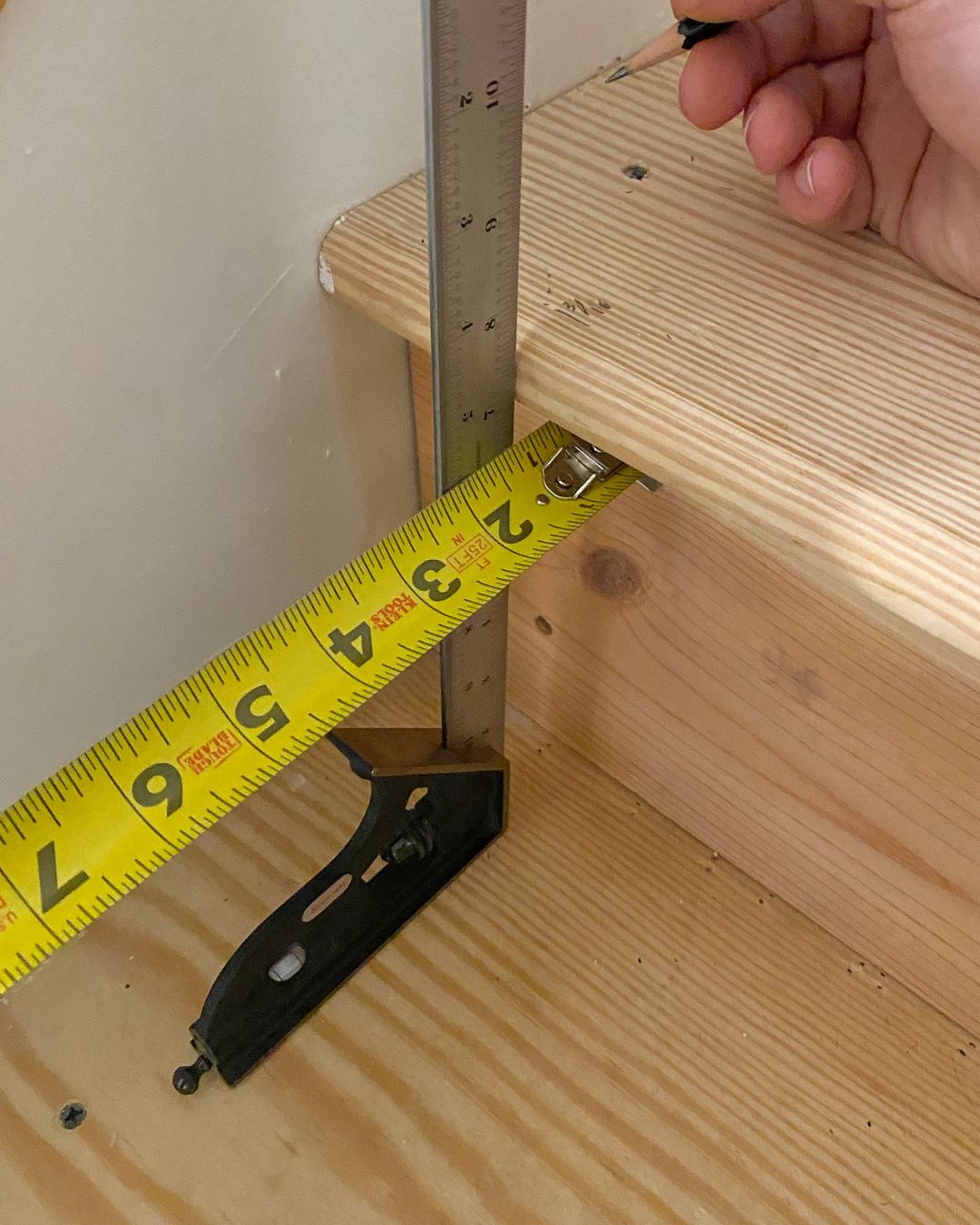
Use a square to create a straight line from the longest part of the rounded tread nose down to the tread below. Use a tape measure to measure the distance from the riser under the tread to the square line. We measured in 3 places on each step, left, middle, right. We then cut 3 spacers for each step, using the largest measurement for each. Using one step as an example: the measured distance from riser to end of tread above was left: 1 3/8, middle: 1 5/16, right: 1 3/16 – we cut 3 spacers for this step all at a depth of 1 3/8. We cut the height of the spacers to allow room to install the treads underneath.
Installing the Spacers

We secured the spacers with a nail gun, keeping the top of the spacer snug against the underside of the original stair nosing.
How to Install the Stair Nosings
You’ll be working from the bottom step up to the top, so start by taking a measurement of the width of the bottom step. Cut the Stuga stair nosing to width using a chop saw or mitre saw, putting it in place to test the fit. Then, cut a board for the tread and riser by cutting flooring the same width as the nosing piece. Our steps were not perfectly uniform, level, or square so not all tread and riser widths matched the nosings, so measure measure measure!
Locking Together the Stuga Nosings and Floorboards
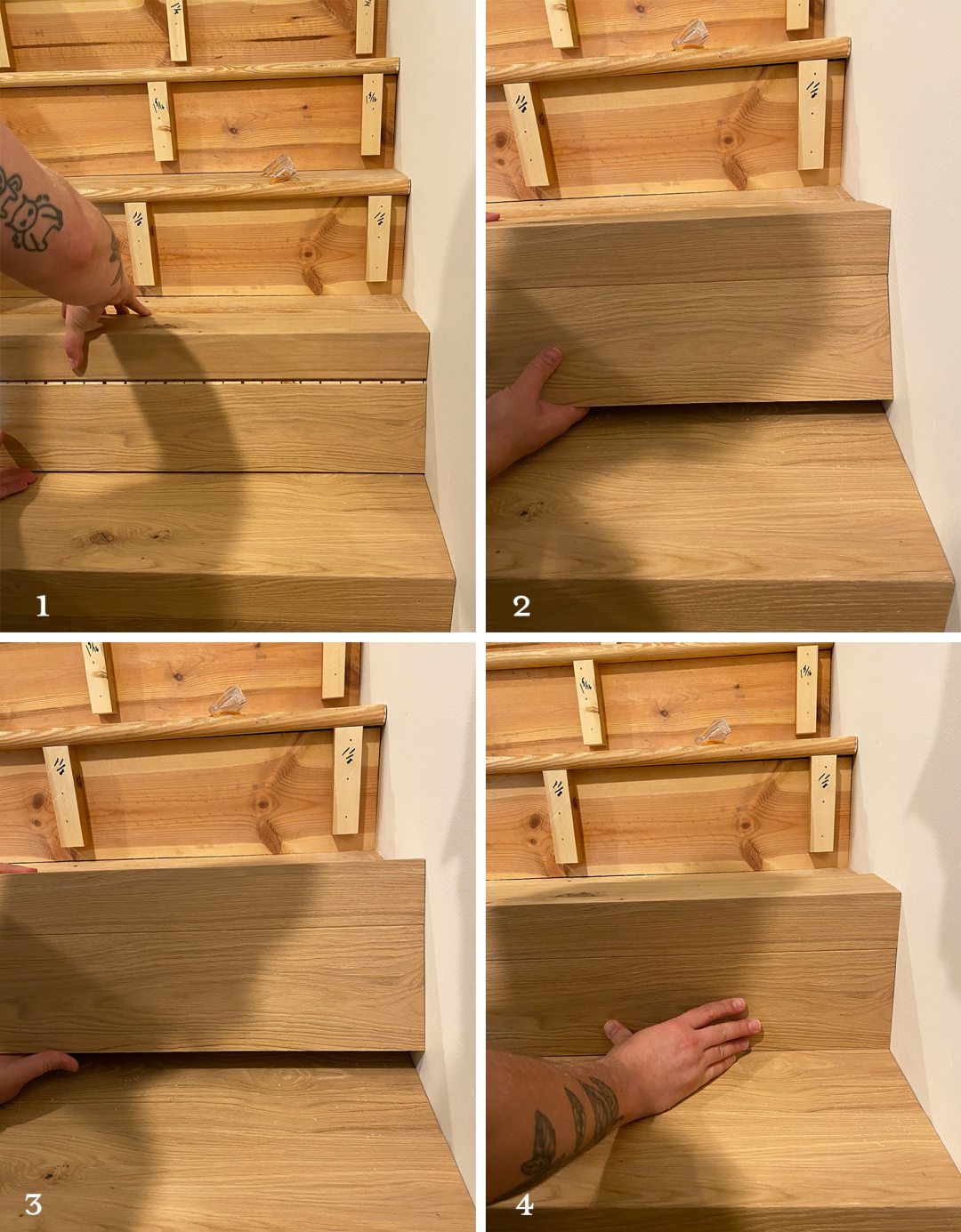
Lock the 3 pieces (tread piece, nosing piece, riser) together and slide into place. Depending on how tight a squeeze it is and how large your steps are, you may need to assemble it piece by piece in place, rather than sliding the whole step in at once. By the time you get to the last step, you’re going to be a real pro. For more on how Stuga flooring locks together, see my post on how to install Stuga flooring.
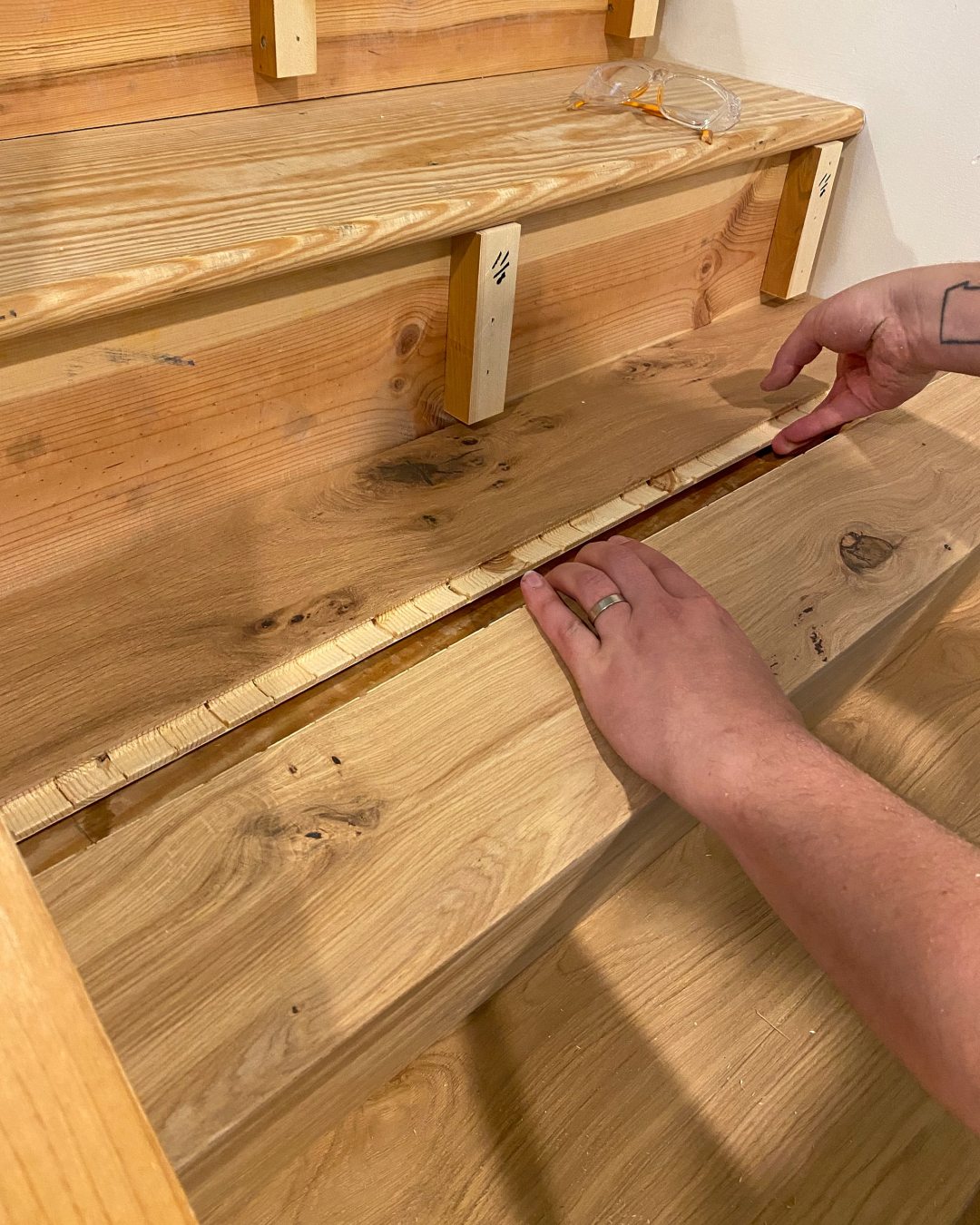
Here’s another look from the top showing the nosing and riser pieces previously locked together, getting ready to have the tread piece tilted and locked in.
Securing the Stuga Nosings to the Spacers and Treads
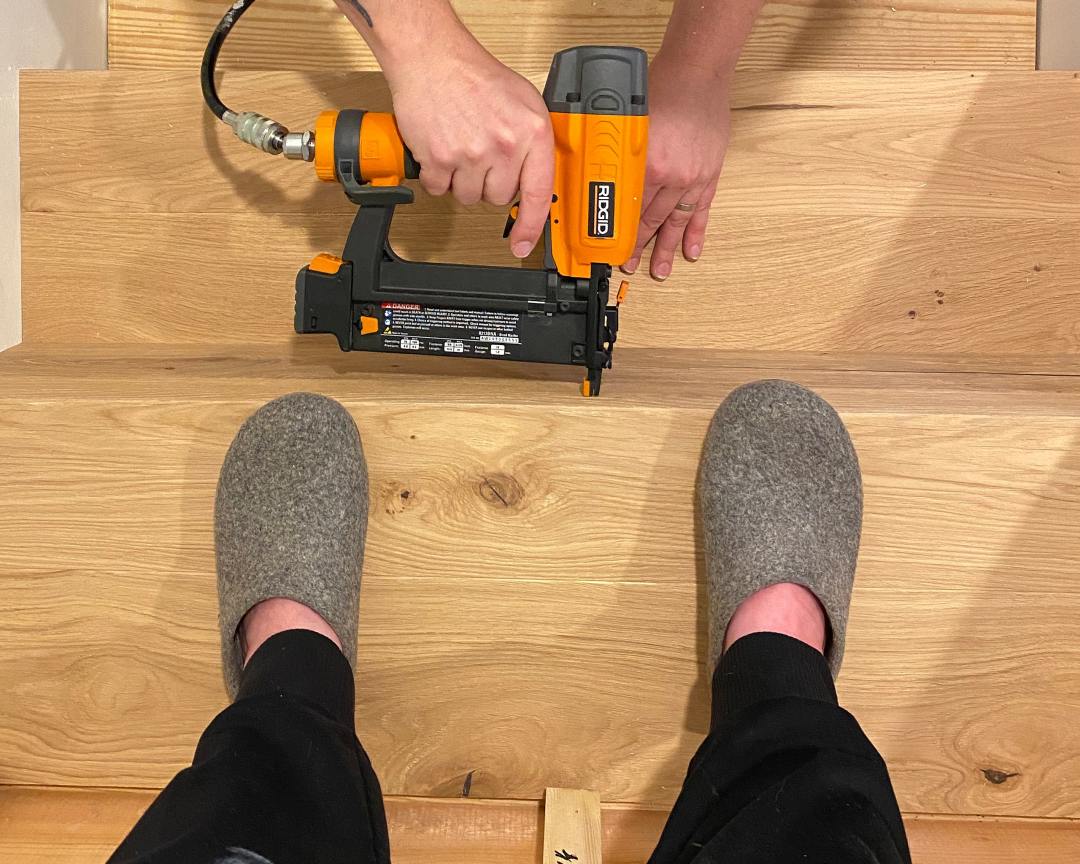
As we worked our way up, we secured the nosings in place with a brad fired through the riser piece into the spacers, just like securing screws to studs on a wall. To keep things in place, it was helpful to have one person stand on the step while another nailed it in placed. I was really good at the standing part. In addition to securing the stair nosings with brads, you can also apply a strong glue on the treads.
To fill the brad nail holes, Stuga recommends creating perfectly matching filler by sanding the top of a scrap of flooring and mixing the sawdust with wood glue.
Oiling
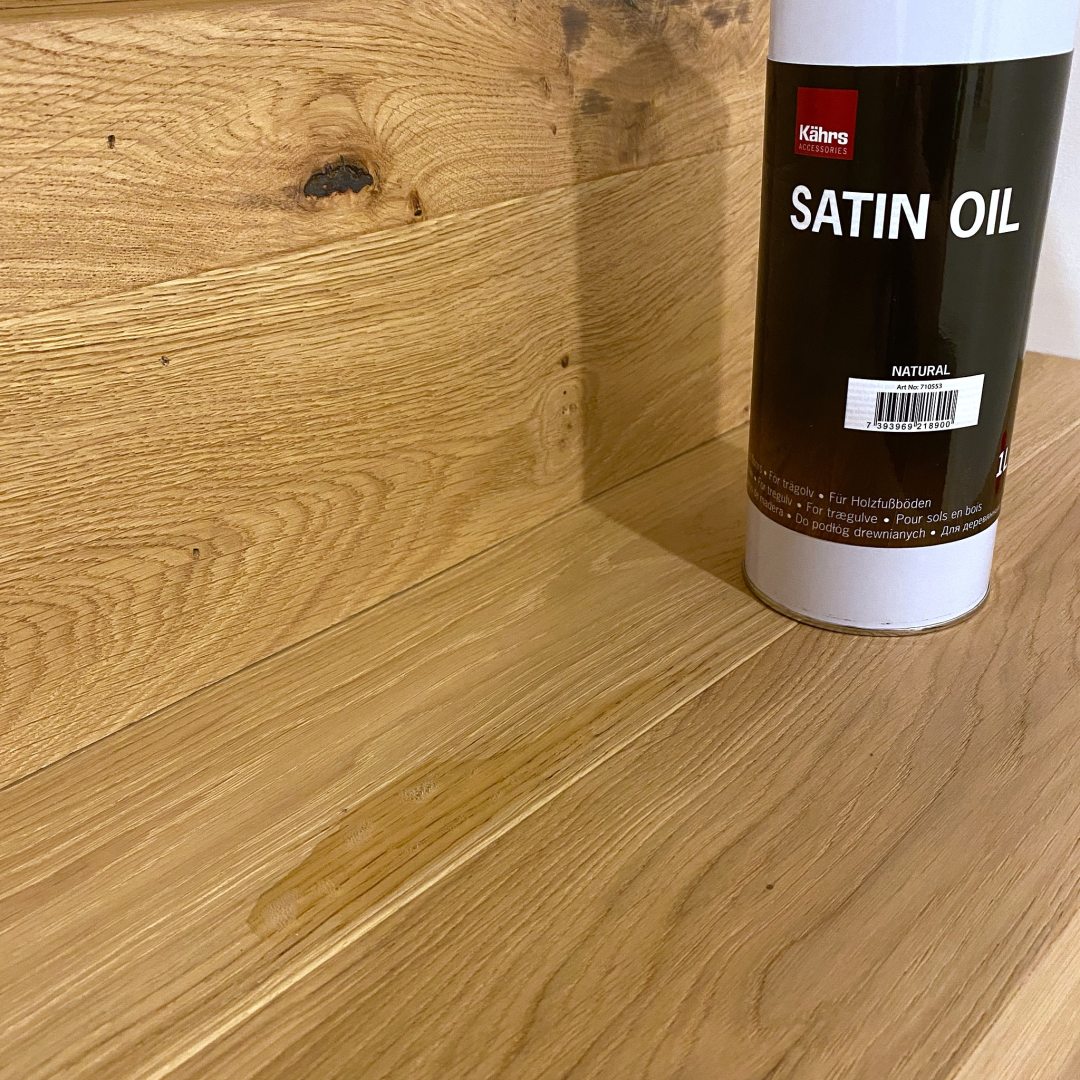
If you’re using a Stuga flooring type that requires oiling, like Shell, you’ll need to oil the steps to protect them after installation. Pour a small amount of Satin Oil onto one tread at a time, then spread the oil out in a thin layer with a microfiber cloth or pad.

Repeat for all the treads and risers. Let the oil dry for 15 minutes and then buff off. After 24 hours, apply another light coat, wait 15 minutes, and then buff. Another 24 hours and you’ll be all set to use those stairs!
Caulking the Edges
Once you’ve installed and oiled all your stair nosings, you’ll need to do the last bits of finishing work. We used painters caulk to cover the small gaps left between the wall and the wooden stair parts and make things look consistent the whole way down.
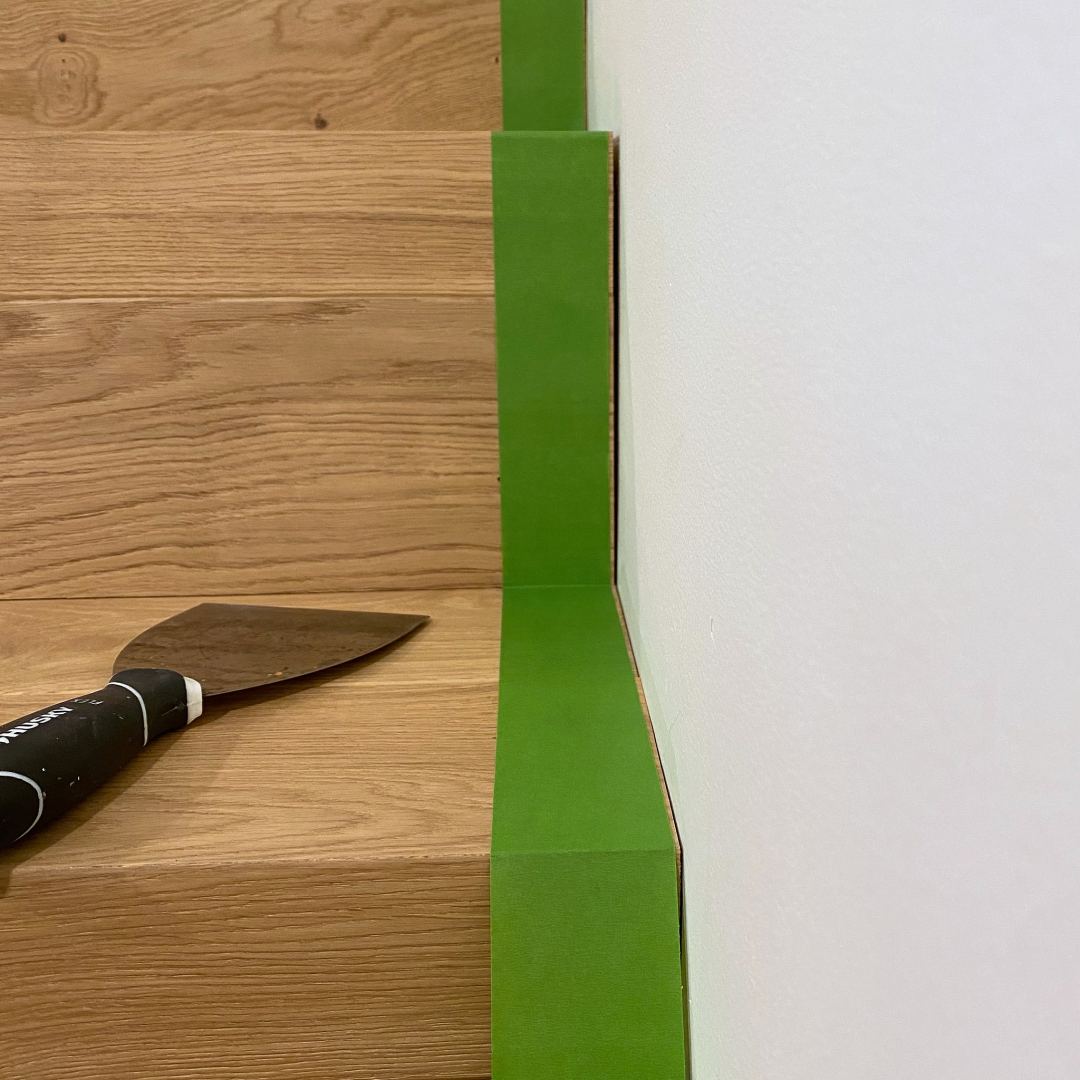
To get a perfect and straight caulk line I used painters tape (big fan of the green kind, not a fan of the blue).
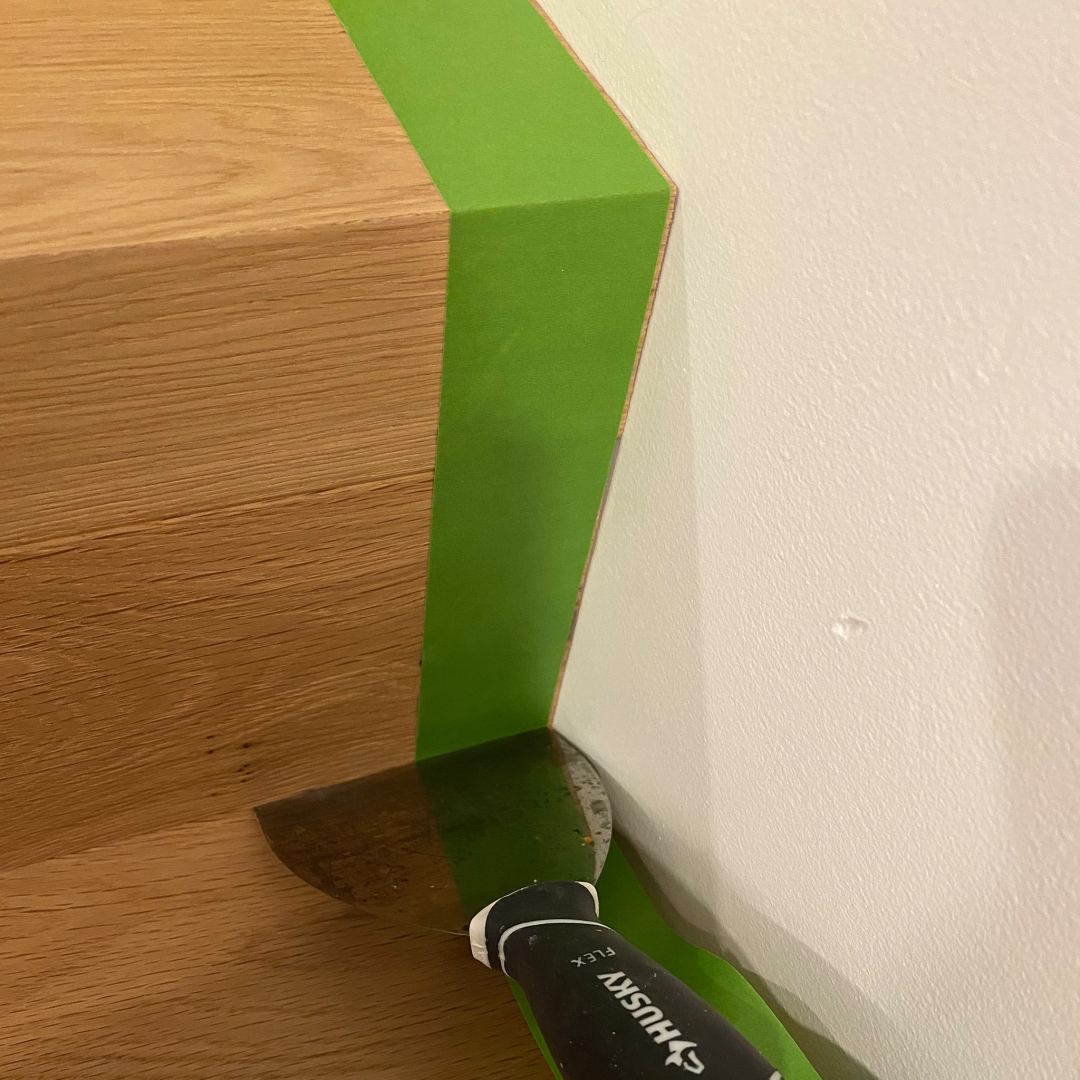
I found a taping knife or scraper to be helpful to get the tape nice and tight into the right angle between steps.
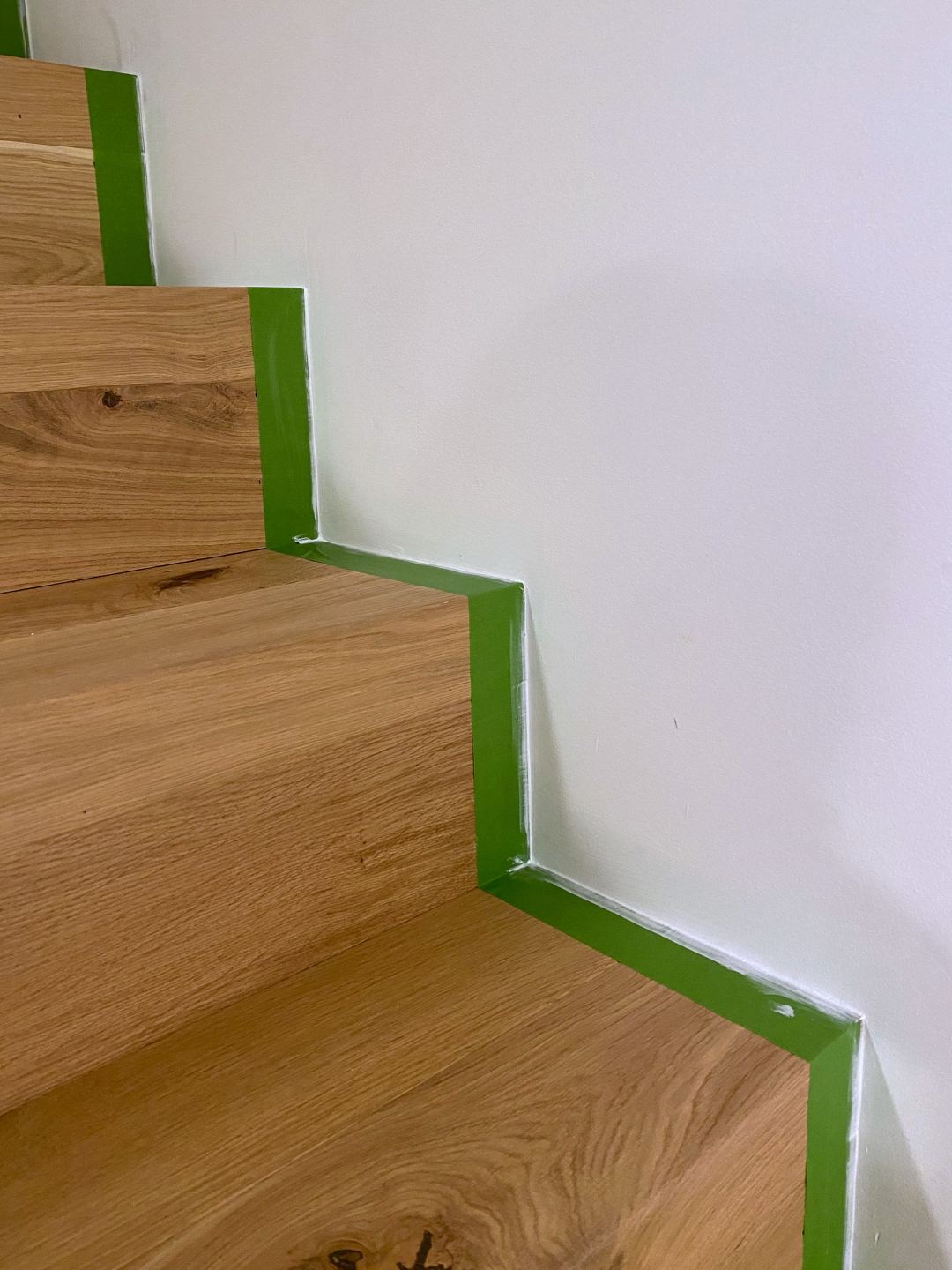
I ran a bead of caulk, smoothed it with a wet paper towel, then let it dry for about 10 minutes.
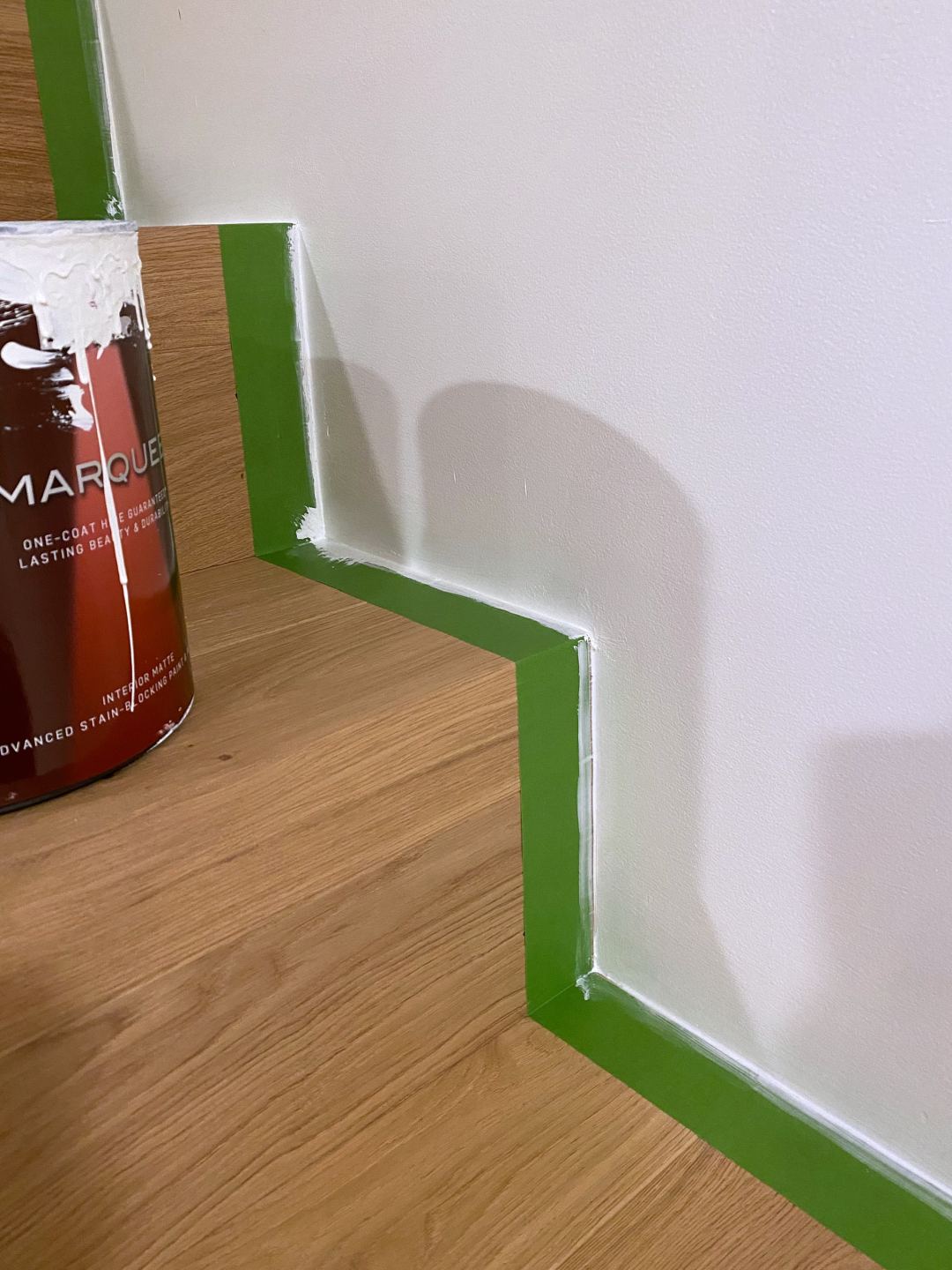
Then, I used my wall paint to paint over the caulk.
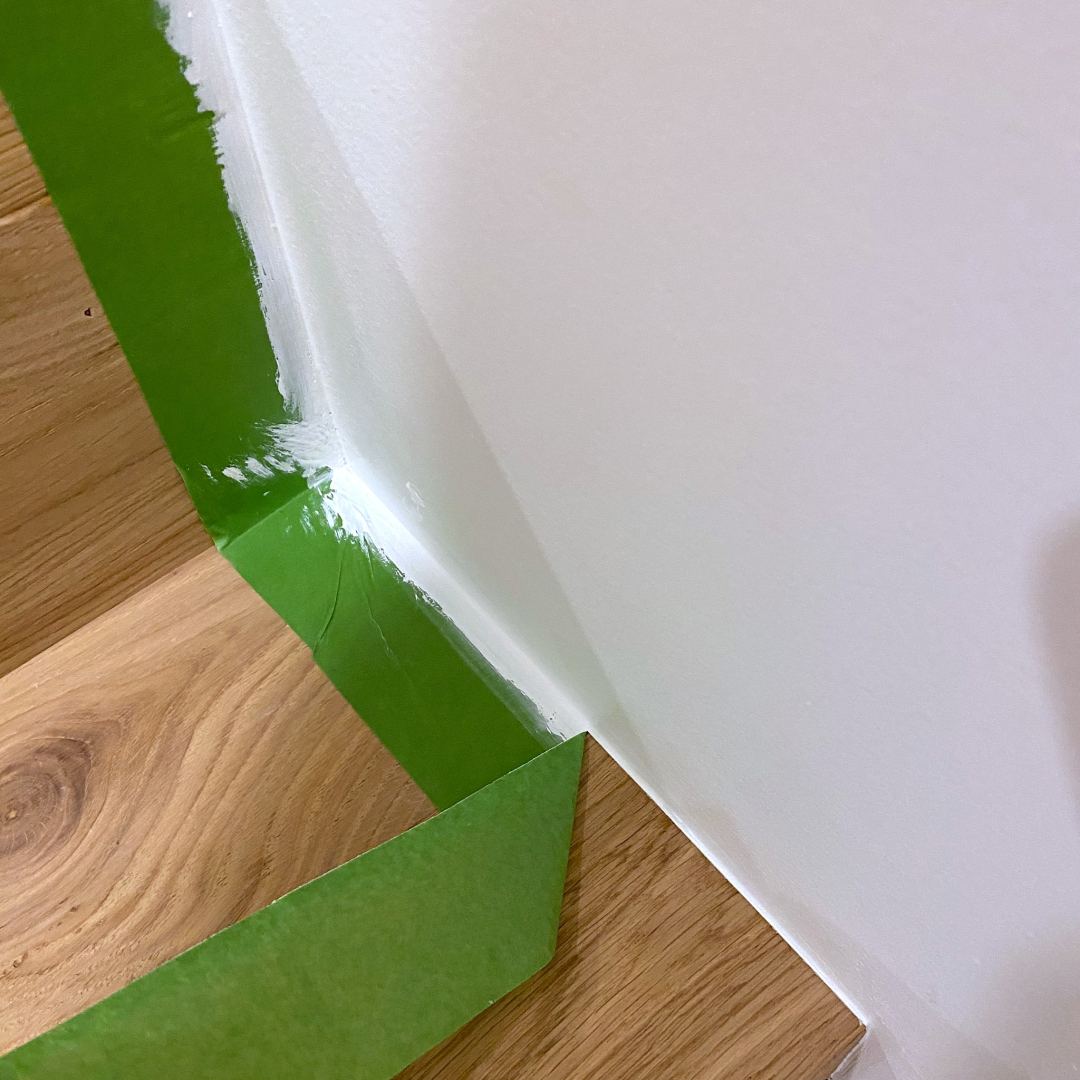
Next, I let the paint and caulk dry for a few more minutes, then very carefully lifted the tape. It’s important to not let the caulk and paint dry the whole way before removing the tape.
Enjoy!
All that’s left is to enjoy those beautiful new stairs.
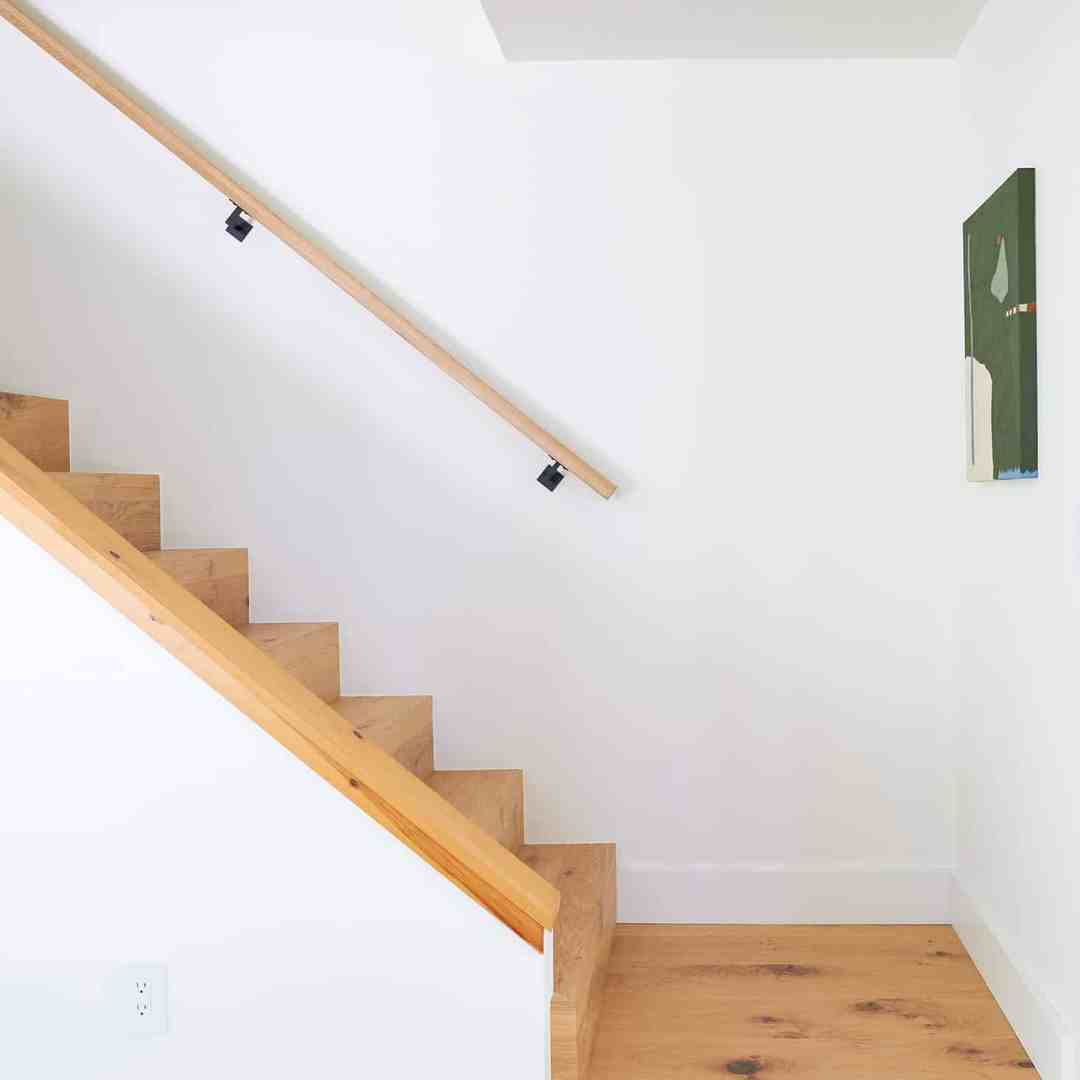

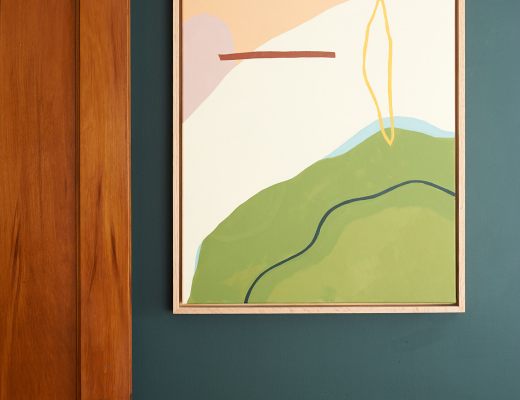
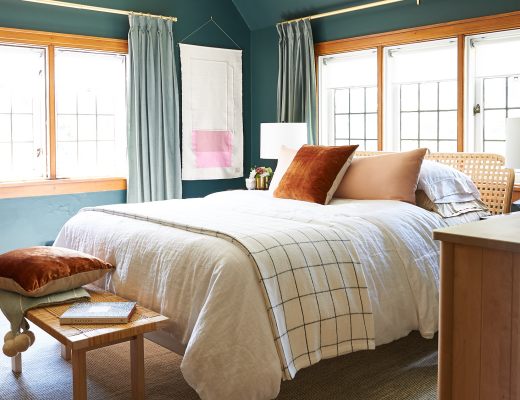
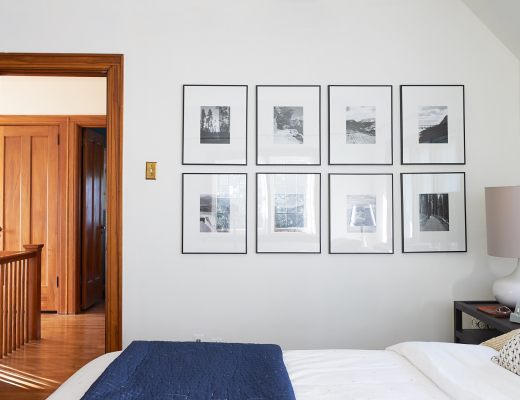
No Comments